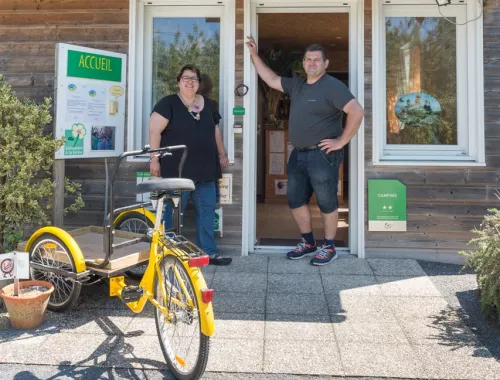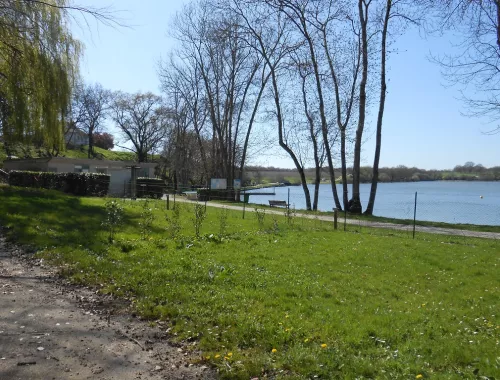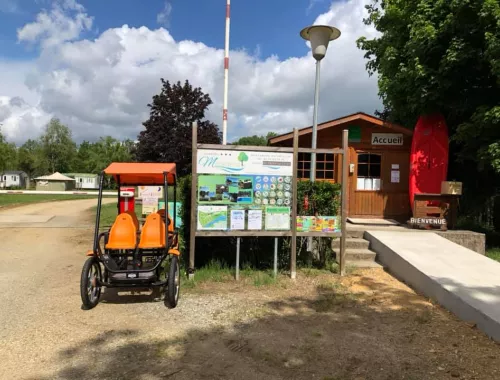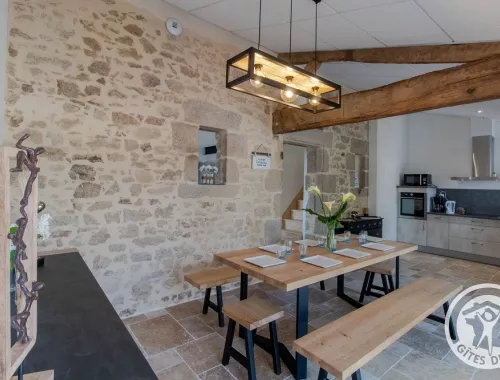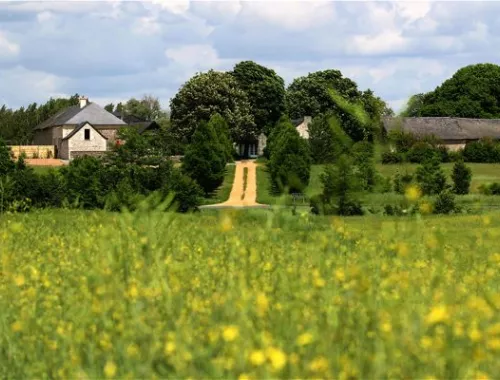DOUÉ-LA-FONTAINE
Activity
DOUE-EN-ANJOU
Contact
Description
It is the capital of a canton where the tourist attractions include the underground, animal and plant worlds. It's an attractive town, rich in history, heritage and cultural events. Roses and troglodytes have brought the town international renown, with the falun quarries serving as a showcase for the queen of flowers at the annual Rose Days event, first held in 1959! As for the Bioparc, it's a zoo like no other, where safeguarding species and preserving the natural environment go hand in hand.
Around 20 million years ago, in the Miocene period, the Falun Sea occupied the Doué-la-Fontaine area, the main evidence of which today is the thick layer of shell limestone that forms the subsoil. It was in this falun that man dug both to live and to quarry stone. There is evidence of a sarcophagus-making industry as far back as the Merovingian period, and numerous troglodytic dwellings from the Middle Ages onwards, followed by quarries.
The evidence from the past seems insufficient to confirm the existence of a genuine Gallo-Roman settlement. In contrast, the High Middle Ages saw the emergence of intense economic and religious activity. Archaeological discoveries made during the urbanisation of the 20th century and ancient texts reveal the presence of a 7th century ecclesiastical group (Saint-Jean baptistery and Saint-Léger church) that predates the religious monuments still visible today.
An archaeological treasure trove can be found in the commune: the "Carolingian House", dated to around 900. It is one of the few civil buildings from the Carolingian era to have been preserved nationwide. In the main hall, a partition wall contains the remains of a fireplace, another rare example known in France from the 10th century. The building was taken over during the conflicts between the Counts of Anjou and Blois.
Foulque Nerra took control of Doué in the 11th century and built a new fortress. The village was surrounded by a wall, which encouraged economic growth. Two churches were consecrated in March 1040 by the Bishop of Angers, Hubert de Vendôme: Saint-Denis church, of which only a few remains, and Saint-Pierre church, a parish church entirely rebuilt in the 15th century.
The 18th century brought new prosperity and numerous town planning projects, thanks in particular to the actions of Baron Foullon. The town's crafts and agricultural activities were flourishing, with 20 fairs and markets a year. The iron and cloth trades were very active, and the town acquired a national dimension thanks to the Baron's nurseries.
Joseph François Foullon was Louis XVI's Intendant of the Military and then of Finance. He built the town's fountain, with its washhouse and drinking trough, and the Champ de Foire, which was essential for the expansion of trade. Above all, with the enlightened help of a royal gardener, he developed the cultivation of roses, for which Doué-la-Fontaine is now internationally renowned. The nurseries were set up at Soulanger, where he had a château built and 500,000 Italian poplars planted. The superb stables, the only part of the château remaining today, now house the Aux Anciens Commerces museum.
On 1 October 1964, the communes of Doué, Douces and Soulanger merged.
Infos

Access
Address
49700 DOUE-EN-ANJOU
FRANCE
updated : 13 mars 2024By : SPL SAUMUR VAL DE LOIRE TOURISMESuggest changes.

